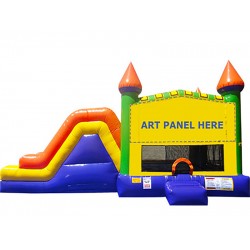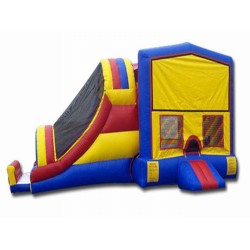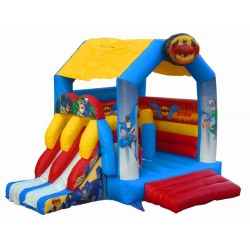What Are the Risks Involved with Incorrect Jumping Castle Installation?

Jumping castles offer hours of fun for children, but when they are installed incorrectly, they can present significant safety hazards. Understanding the risks involved with improper installation is essential for ensuring the safety of all users. Below are some of the key risks that can arise from incorrect setup.
1. Risk of Tipping or Collapse
One of the most dangerous outcomes of incorrect installation is the risk of the jumping castle tipping over or collapsing. This can occur if the inflatable is not properly anchored or if it is set up on uneven ground. A tipping or collapsing castle can cause serious injuries to the children inside.
Risks include:
- Children being trapped inside or falling from the structure.
- Potential head injuries from impact with the ground or other children.
- Damage to the inflatable itself, leading to further safety issues.
2. Tripping Hazards from Loose Ropes or Unsecured Areas
Loose or unsecured areas around the jumping castle can create tripping hazards for both children and supervising adults. Ropes, power cords, or improperly placed blower units can cause someone to trip and fall, leading to injuries.
Risks include:
- Children tripping over ropes or cords while playing.
- Adults supervising the event stumbling over poorly placed equipment.
- Accidents resulting from people trying to catch themselves as they fall.
3. Deflation Due to Poor Airflow or Blower Issues
If the blower supplying air to the jumping castle is not working correctly or is blocked, the inflatable can begin to deflate during use. This poses a significant danger to children inside, as the structure could collapse suddenly.
Risks include:
- Children being suffocated or trapped in deflated sections.
- Panic or injuries as children try to escape the deflating structure.
- Blower malfunctions causing unexpected interruptions to the fun and safety.
4. Movement or Shifting During Use
Incorrectly anchored jumping castles can move or shift during use, especially if children are jumping vigorously. This can cause the inflatable to drift, tilt, or fold, creating an unstable and hazardous environment.
Risks include:
- The castle moving unexpectedly, leading to children falling or colliding.
- The inflatable collapsing in on itself, potentially trapping children inside.
- Injury due to sudden and uneven surfaces forming inside the inflatable.
5. Weather-Related Hazards
Installing a jumping castle in poor weather conditions or failing to take weather into account during installation can create dangerous situations. Strong winds, for example, can lift or move the inflatable if it is not properly secured.
Risks include:
- The jumping castle becoming airborne during windy conditions.
- Children being thrown from the castle due to sudden gusts of wind.
- Damage to the inflatable from exposure to rain or extreme heat, affecting its stability.
6. Overcrowding or Overloading the Castle
An incorrectly installed jumping castle may not be able to support the recommended number of children safely. Overcrowding or exceeding the weight limit can cause the castle to sag, deflate, or even collapse.
Risks include:
- Children colliding due to lack of space, leading to potential injuries.
- The structure collapsing under excessive weight, trapping children inside.
- Damage to the inflatable that could cause deflation or permanent damage.
7. Improper Supervision Due to Installation Errors
Incorrect installation can also result in reduced visibility for adults who are supervising the children. If the inflatable is positioned too close to walls, trees, or other objects, it can block the view of those monitoring the activity.
Risks include:
- Inability to see children if they fall or are in distress.
- Delayed response to accidents or unsafe behaviour.
- Increased likelihood of unnoticed risks due to obstructed views.
Conclusion
Incorrect installation of a jumping castle can lead to a range of serious safety hazards, including tipping, deflation, and weather-related accidents. Ensuring proper anchoring, blower functionality, and supervision is crucial to creating a safe and fun environment for children. Always follow the manufacturer’s guidelines and seek professional help if needed to avoid these risks.



